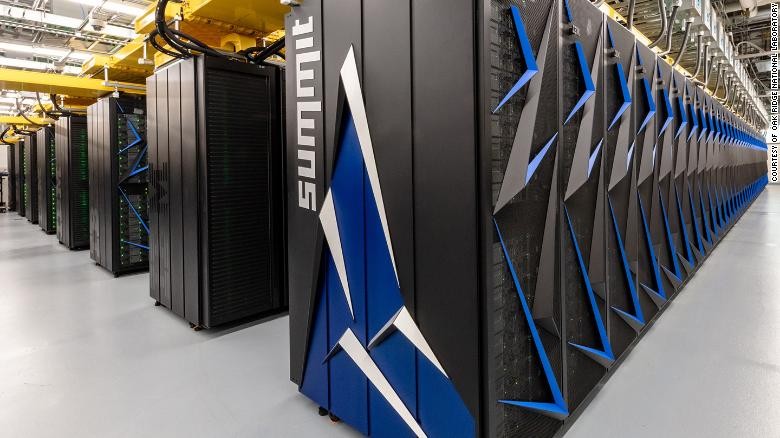Thanks to Summit, the most powerful supercomputer in the world, the researchers managed to identify as many as 77 chemicals potentially capable of stopping, or at least slowing down, the infection of host cells by SARS-CoV-2, the coronavirus that causes COVID-19 respiratory syndrome and that is forcing everyone into the house. It is a very important step for the creation of an effective and reliable vaccine: but the path of research is still very complex.
Summit is a supercomputer commissioned to IBM by the United States in 2014. It has an overall computing power of 200 PetaFLOP per second, although currently the benchmark system Linpack it places it just under 150. In any case, the same service always classifies it as the most powerful supercomputer in the world – and by far: the second and third place, respectively the IBM Sierra (USA) and the Sunway TaihuLight ( China), scores of 94.6 and 93 PetaFLOP per second.
The system is formed by 4,608 processing nodes, each comprising 2 IBM Power9 CPUs and 6 NVIDIA Tesla GPUs, which communicate with each other at a speed of 25 Gigabyte per second. Overall, the system – which is roughly the size of two tennis courts, uses nearly 300 km of fiber optic and weighs 340 tons – can count on 250 petabytes of storage capacity.
The machine is in service at the national laboratory in Oak Ridge, Tennessee, and was designed to help scientists "solve the world's big problems", and is being used to important advances in the medical field. For example, he managed to identify warning signs of Alzheimer's and identified the genes that make the patient more vulnerable to opioid addictions. But not only: it was also used to predict extreme weather events by analyzing the weather of the previous days.
The coronavirus, simplifying a lot, infects the cells of a host organism by binding it chemically and consuming them to replicate itself. Summit's job was the following: find, through innumerable simulations, which substances that can be used in a drug could bind to the virus before it infects the host. Of the more than 8,000 substances analyzed, the supercomputer identified 77, and naturally classified in order of probability.
As we said, it is an important development because offers researchers precise direction, so that they don't have to make blind attempts; however, the results still need to be validated in the field. In addition, computer processing is based on an old model of the virus, dating back to mid-January. The next work will therefore repeat all the simulations using the most updated and precise model published in the past few days.















